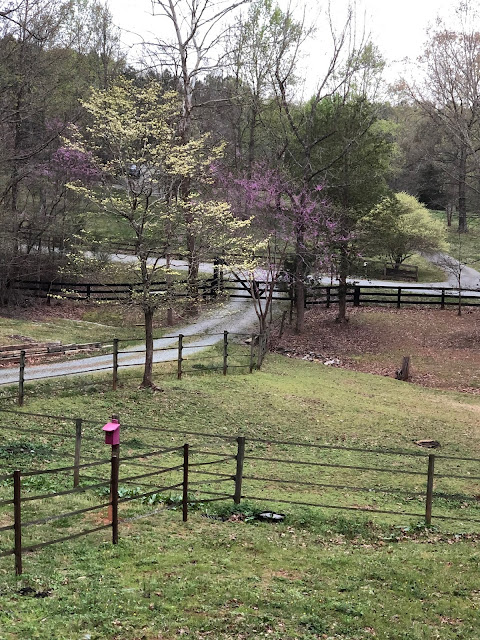Here it is today, coming up in the foreground. The tulips were there when we bought the farm and while they are of course not native, I have let them remain. They bloom early and I can remove the stems before the spotted horsemint comes all the way in.
Below is a nearly mature flower from last year’s horsemint, in the same part of the garden bed. I cannot tell you how much I love these - they take my breath away when in full bloom. A friend who lives on Hatteras says they grow everywhere there, and recommended I manipulate the seed pods in late fall to encourage more growth. I did it the first year and now have many, many more than the three I originally planted. They encompass an entire swath of one pollinator bed now. This may be the year to transplant some of them. For now I’m just enjoying the anticipation.
Monarda punctata
Monarda punctata L.
Spotted Beebalm, Spotted Horsemint, Horsemint
Lamiaceae (Mint Family)
Synonym(s):
USDA Symbol: MOPU
USDA Native Status: L48 (N), CAN (N)
An aromatic, erect perennial ranging from only 6 in. to almost 3 ft. tall. Rosettes of yellowish, purple-spotted, tubular flowers occur in whorls, forming a dense, elongated spike at the end of the stem or from leaf axils. Each whorl is subtended by large, conspicuous, whitish, purple-tinged, leaf-like bracts.
Linnaeus named the genus Monarda in honor of a 16th century Spanish physician and botanist, Nicolas Bautista Monardes (1493-1588). Monardes never went to the Americas but was able to study medicinal plants in Spain.







